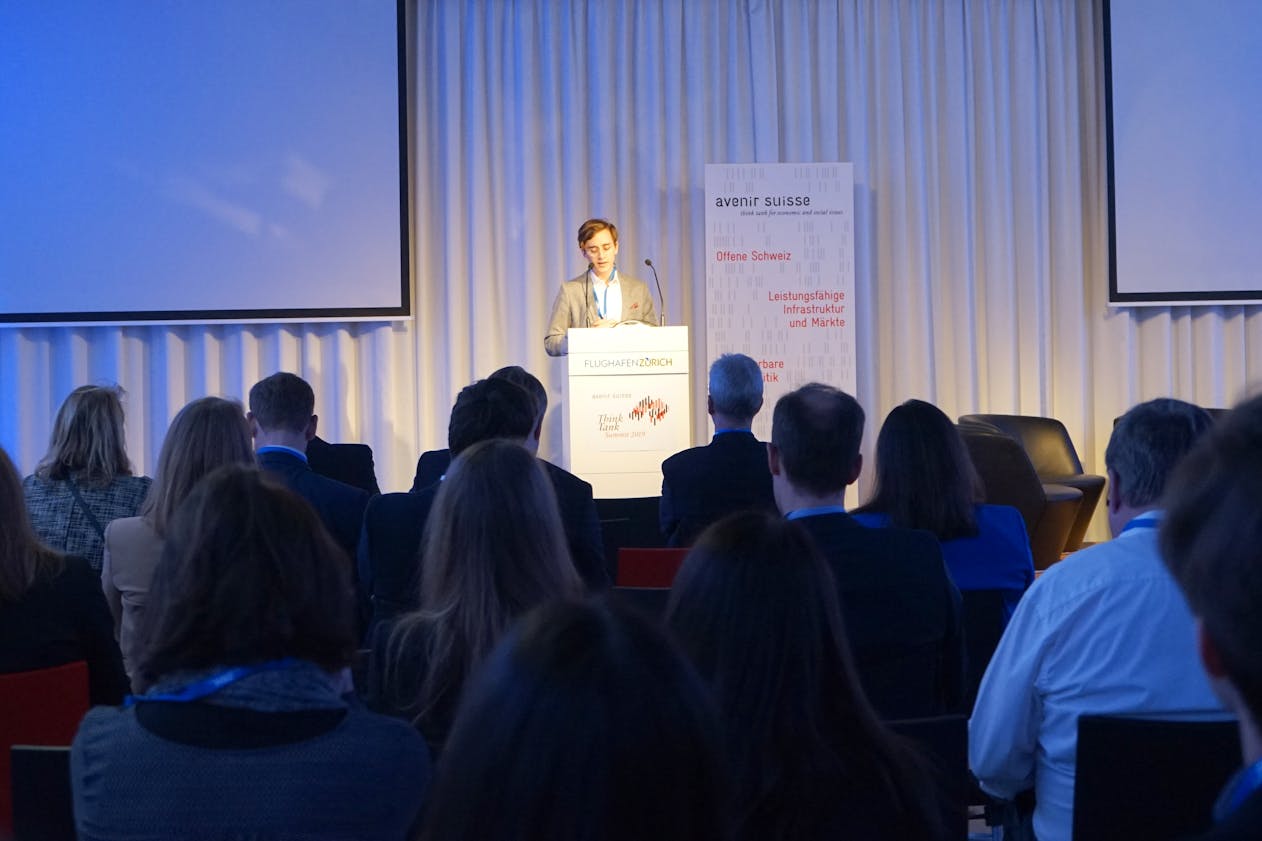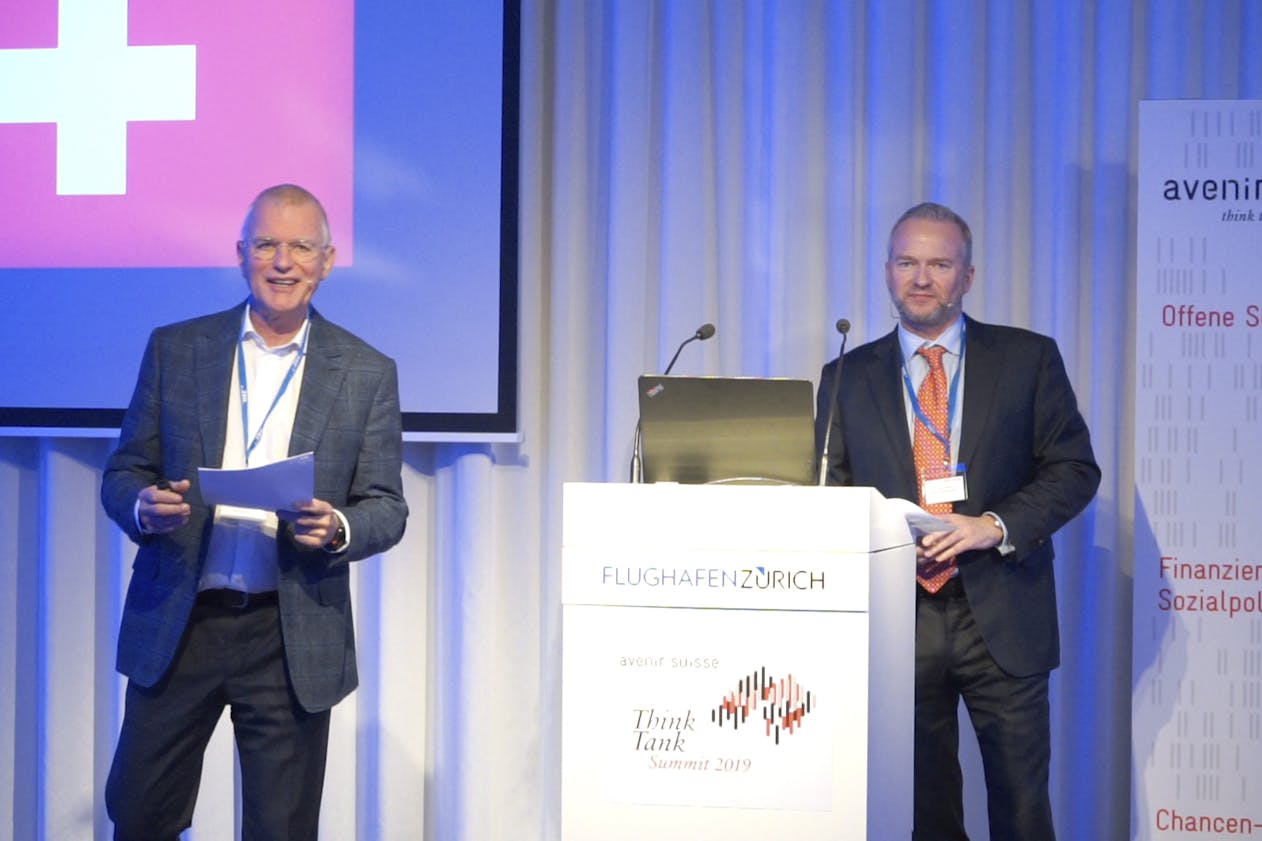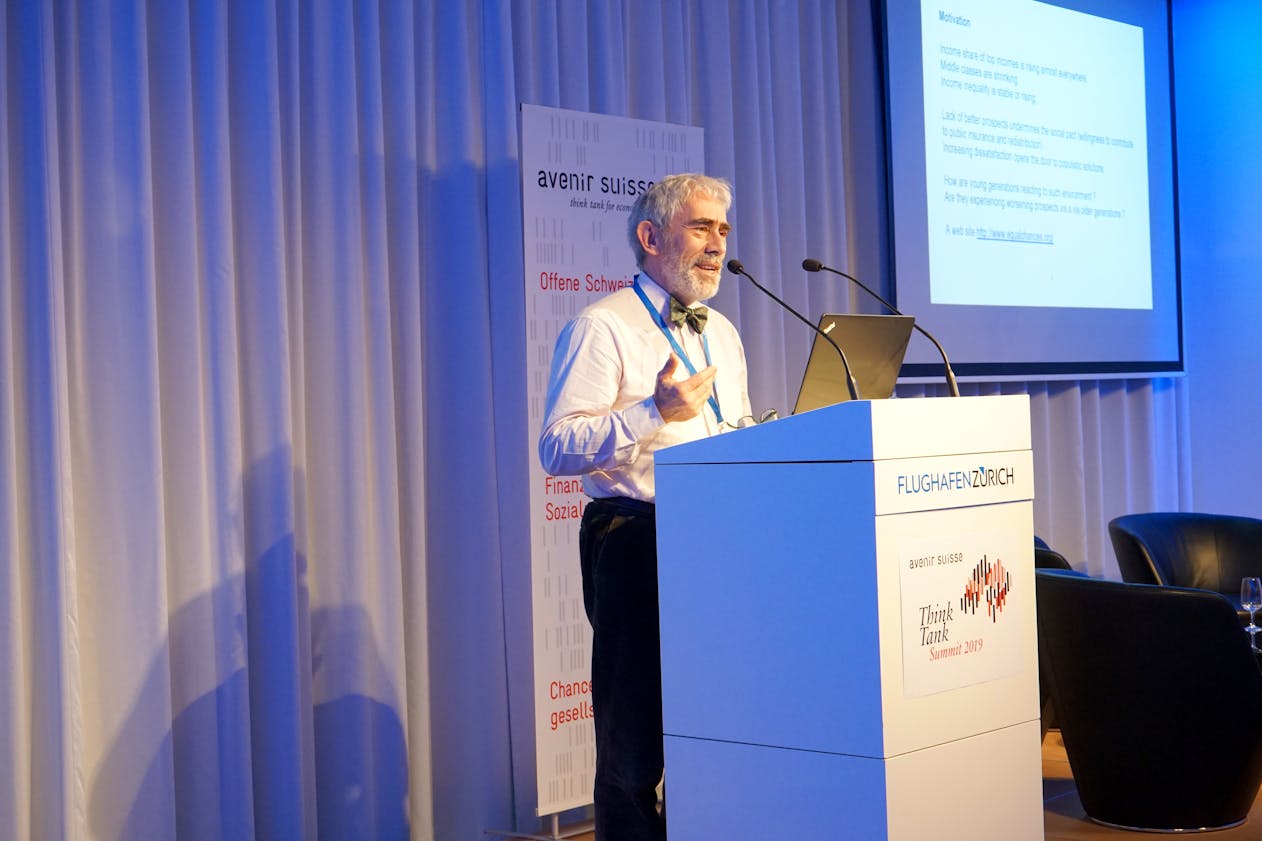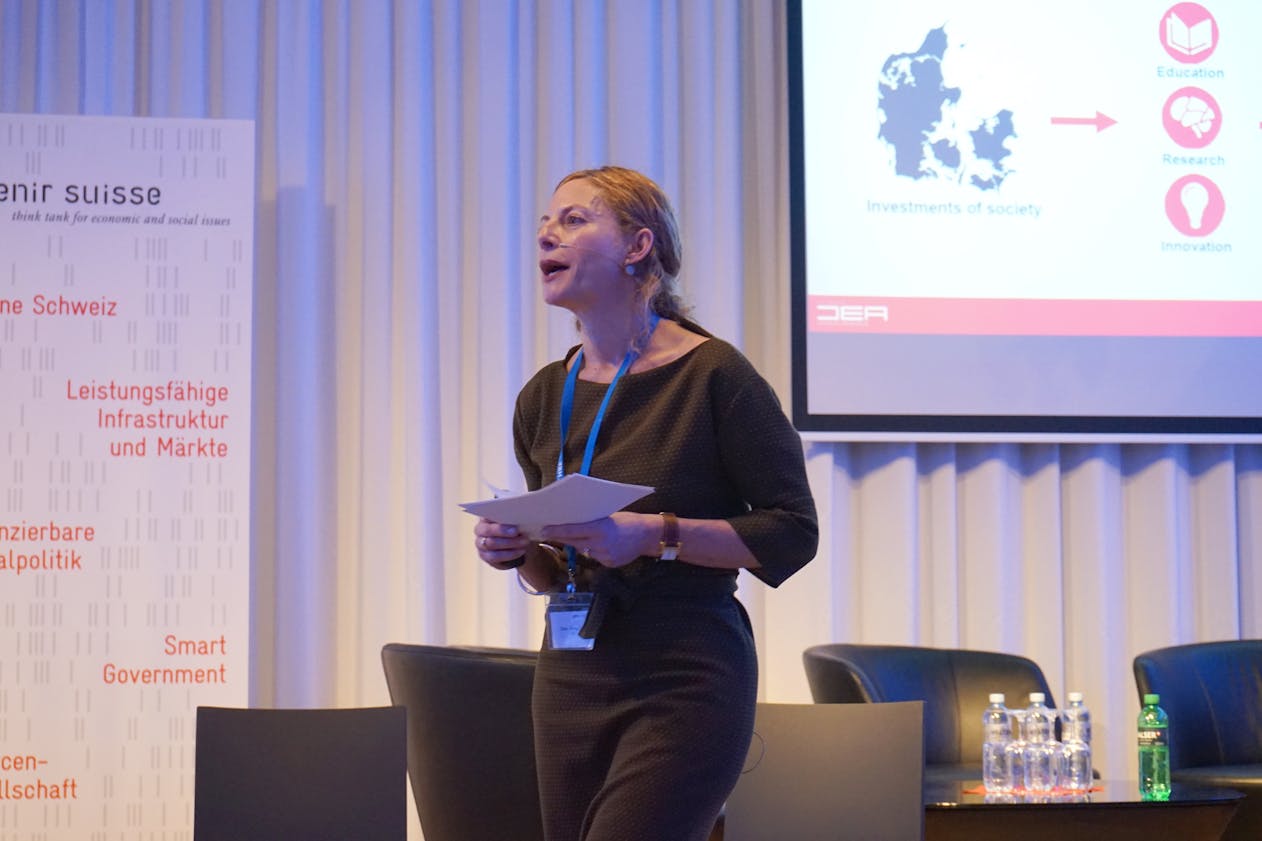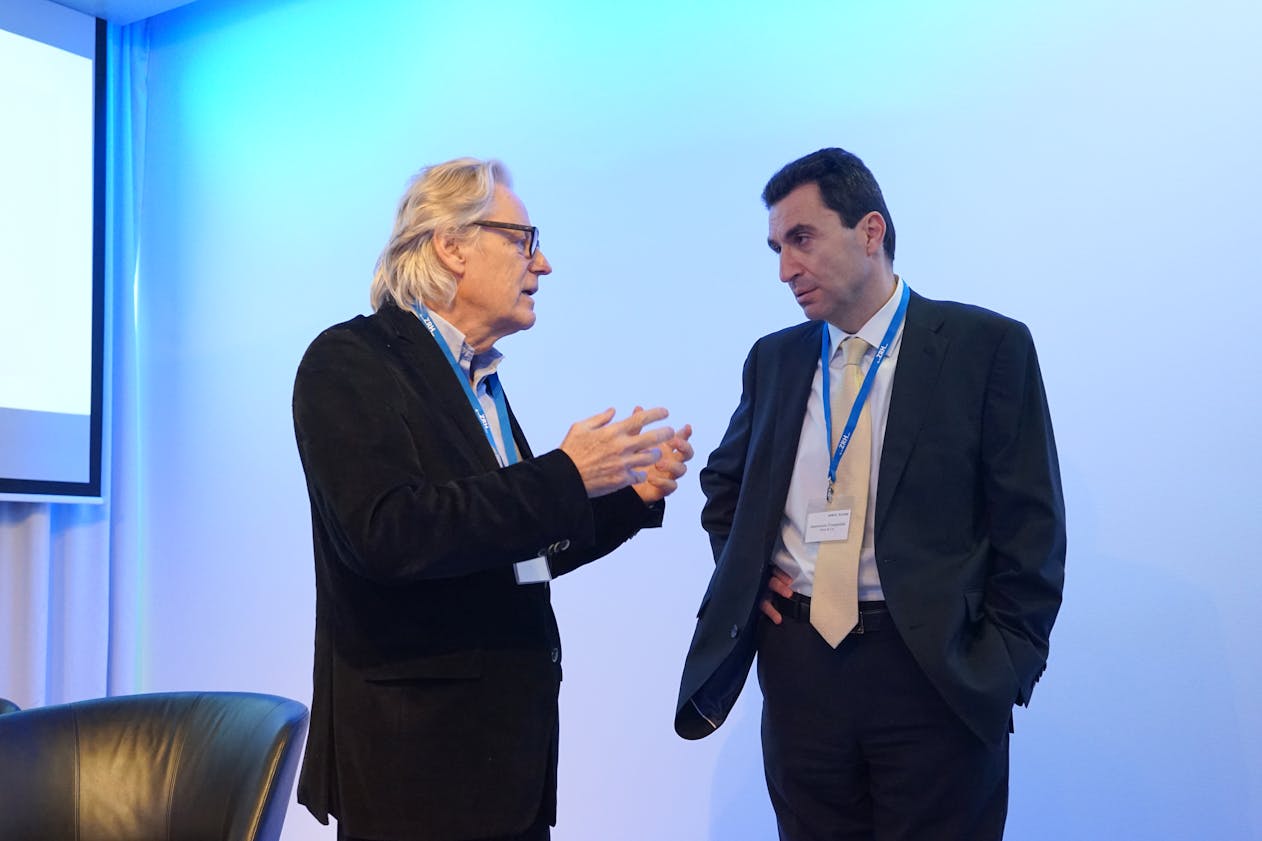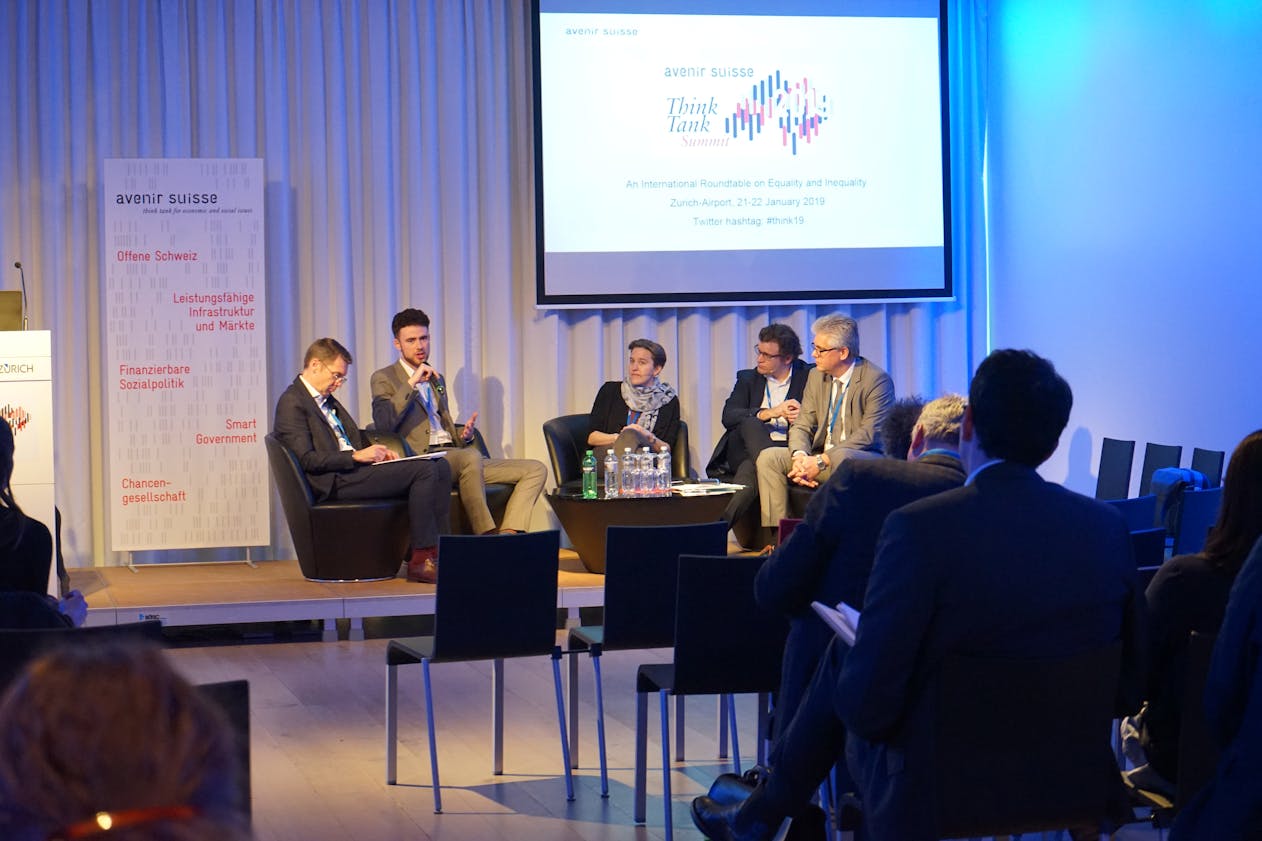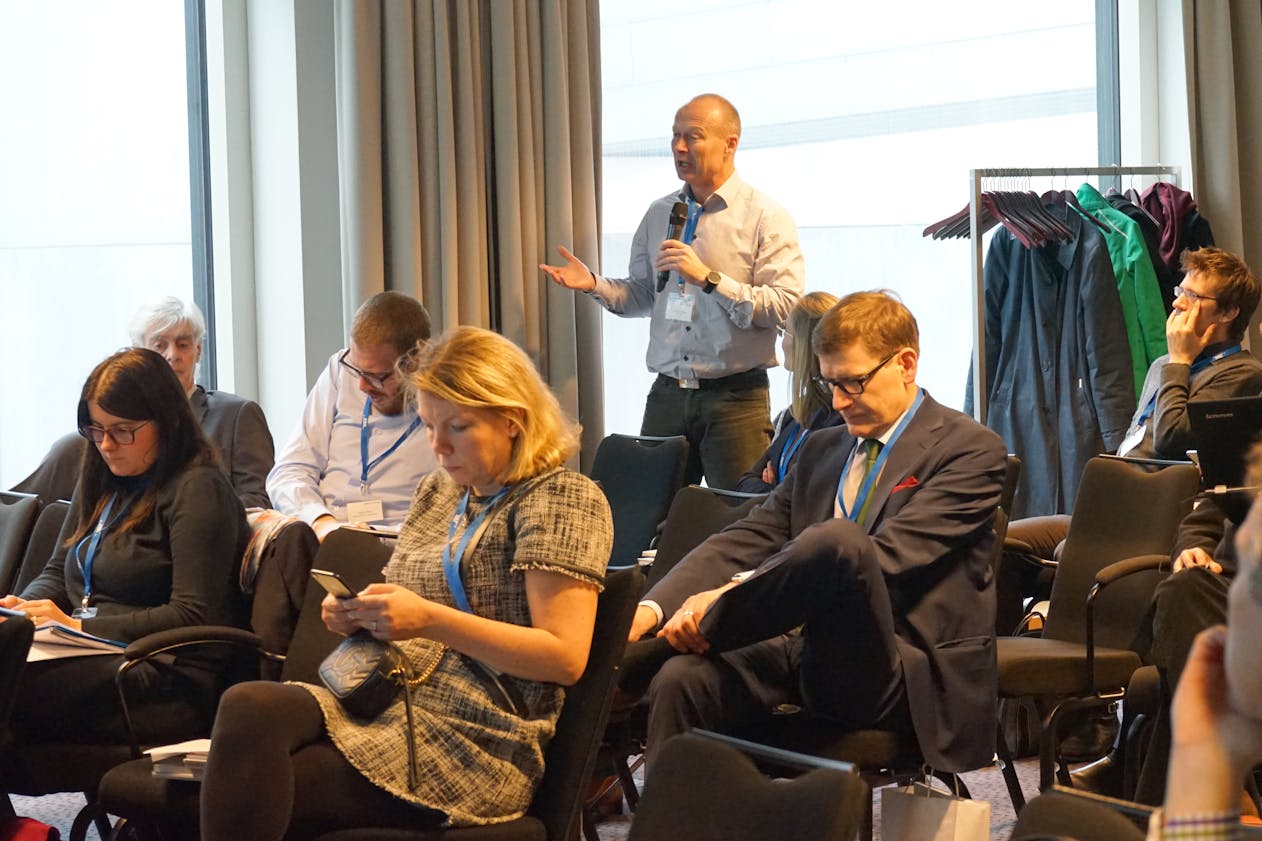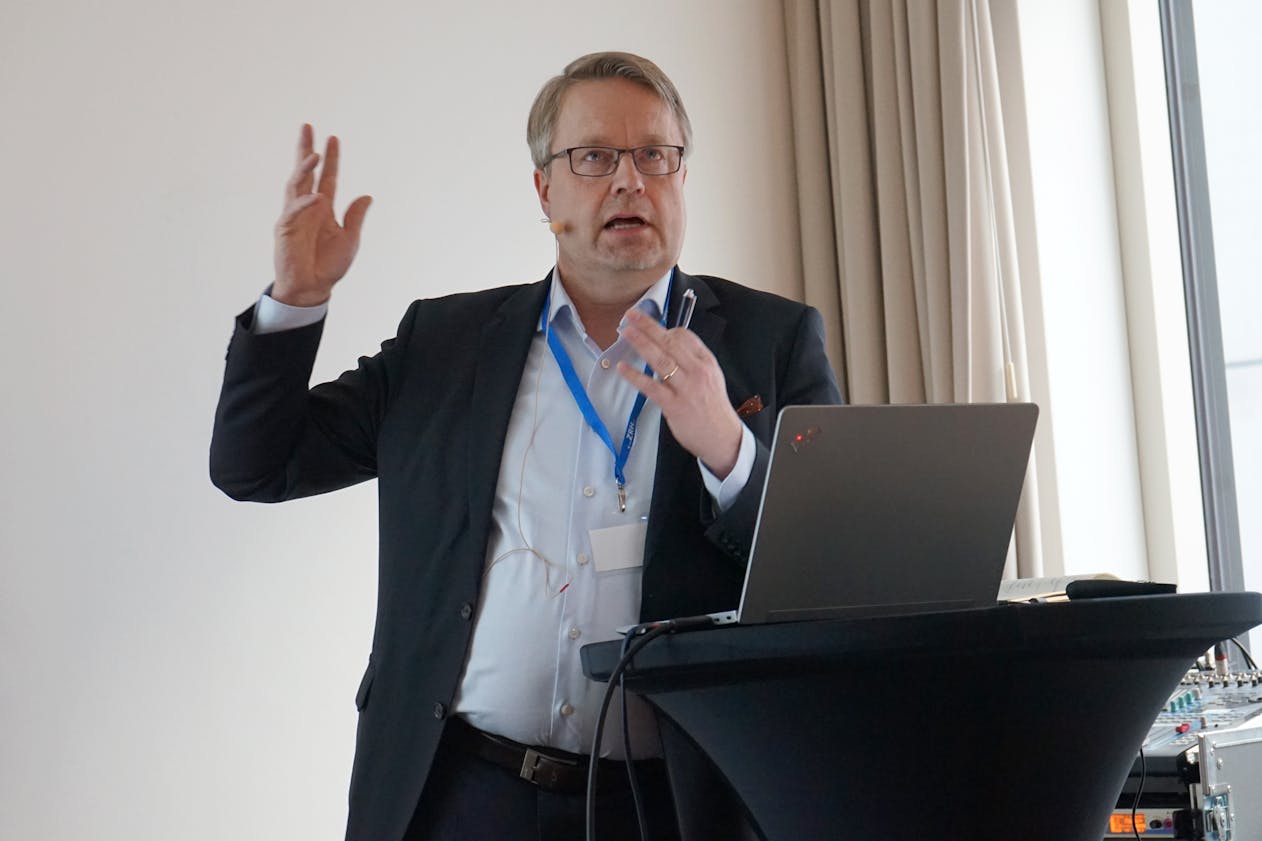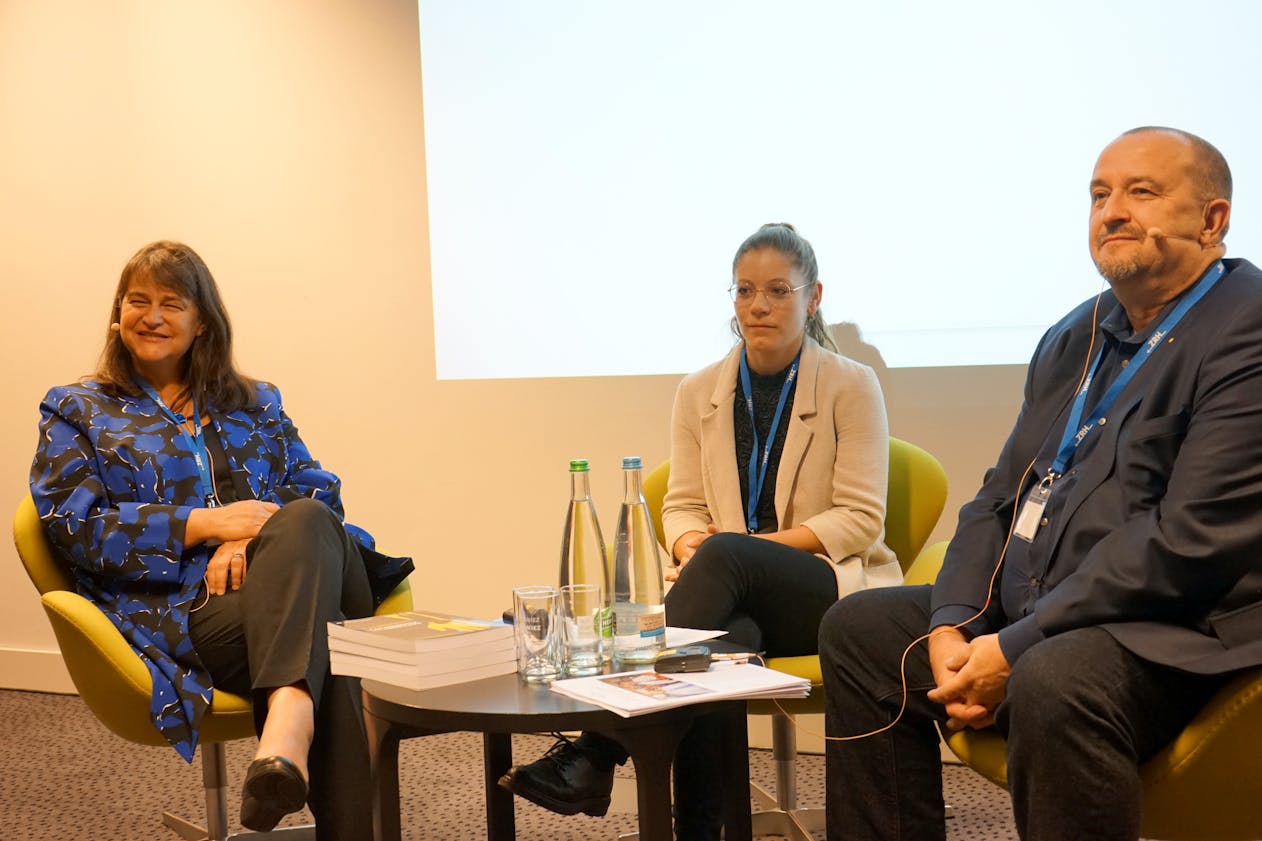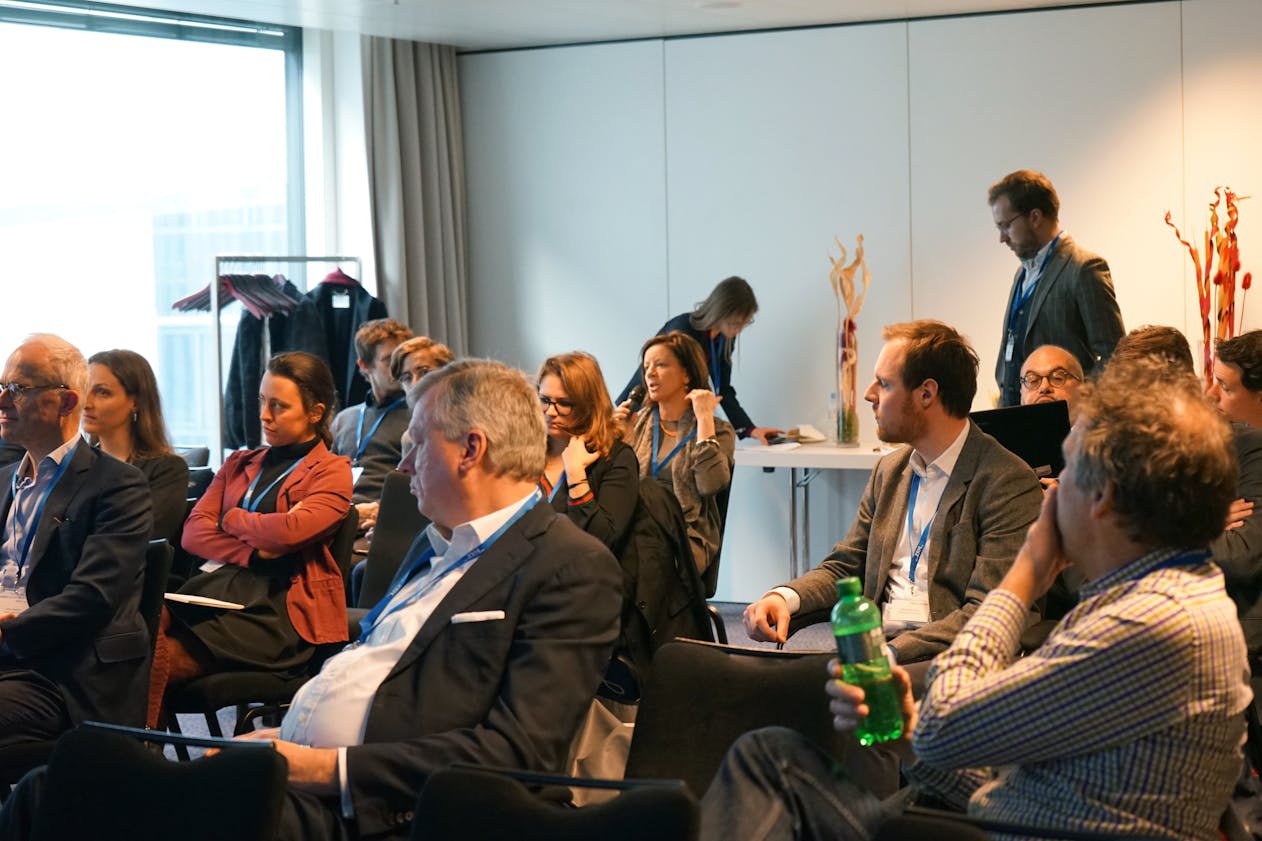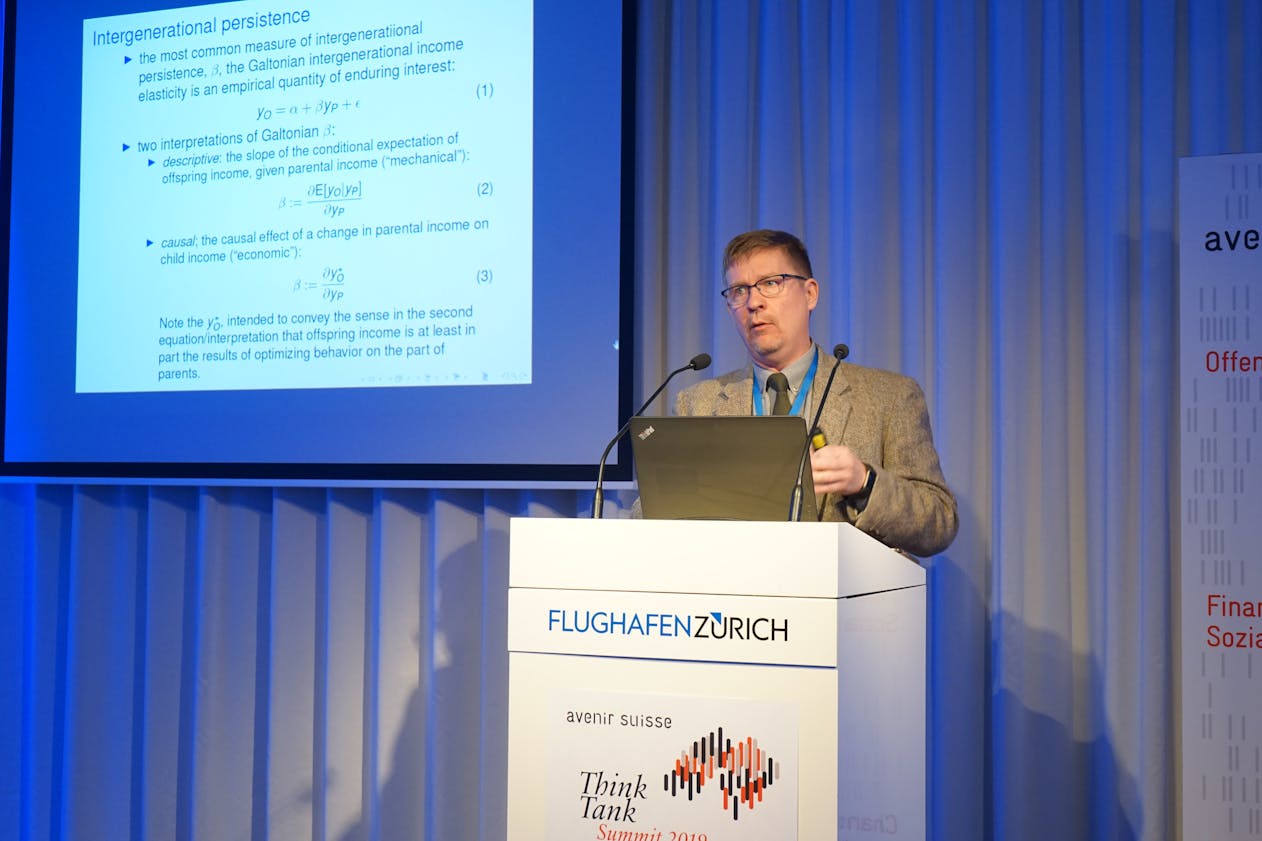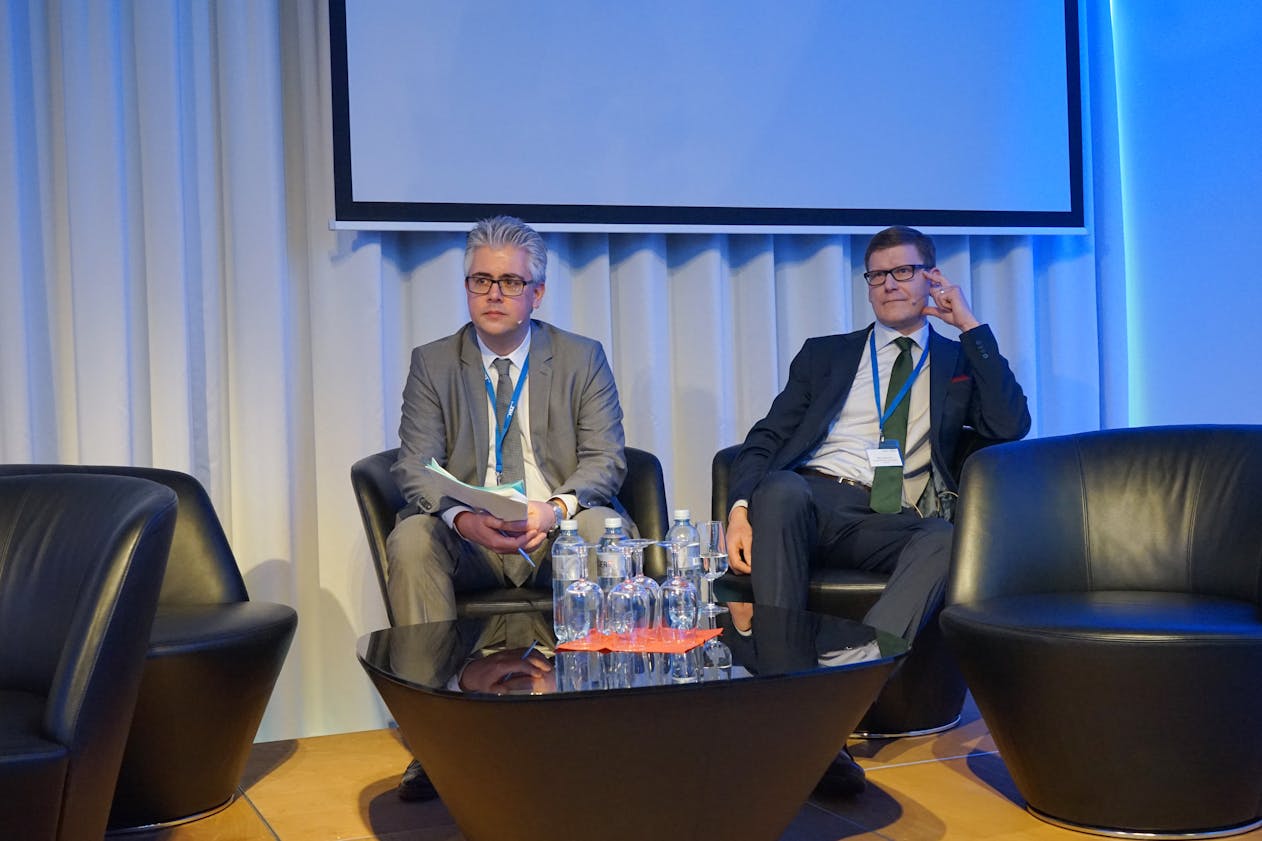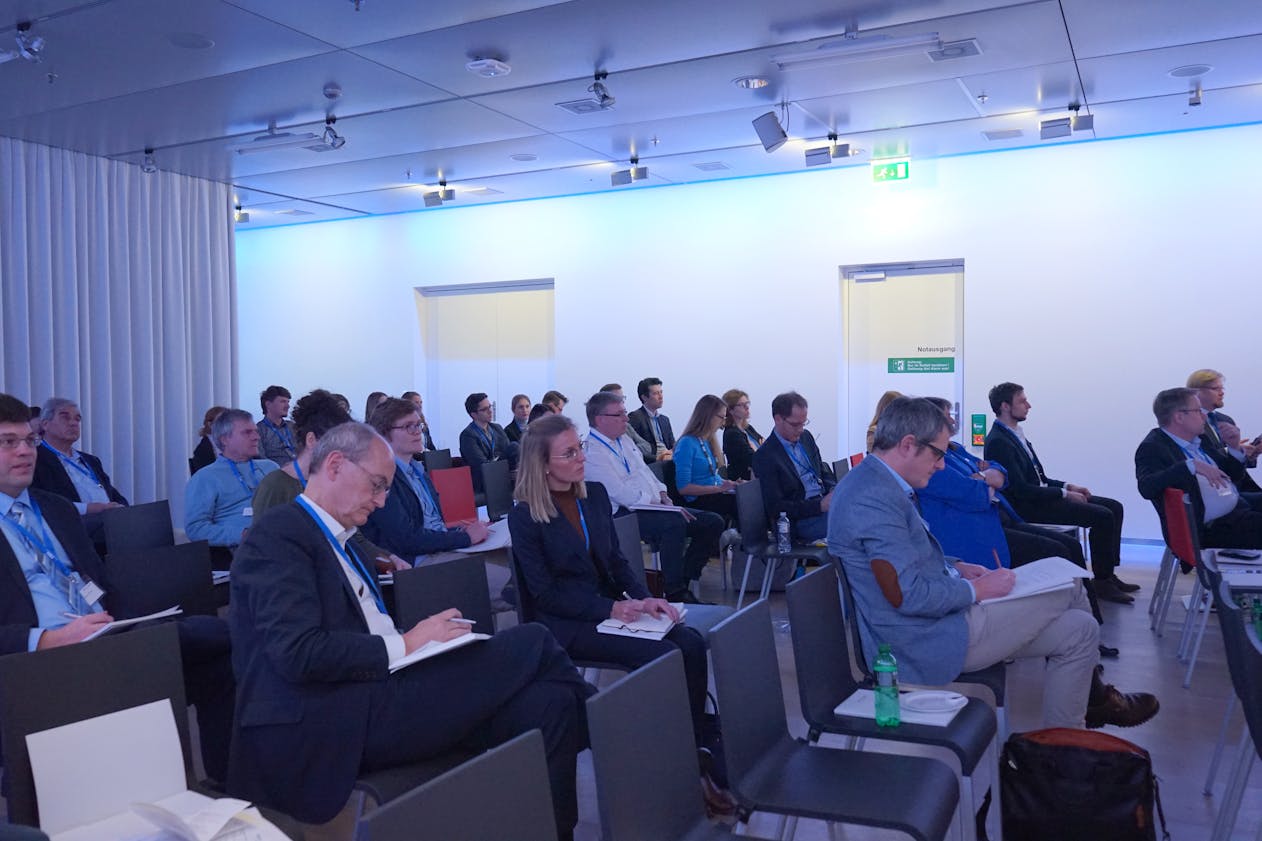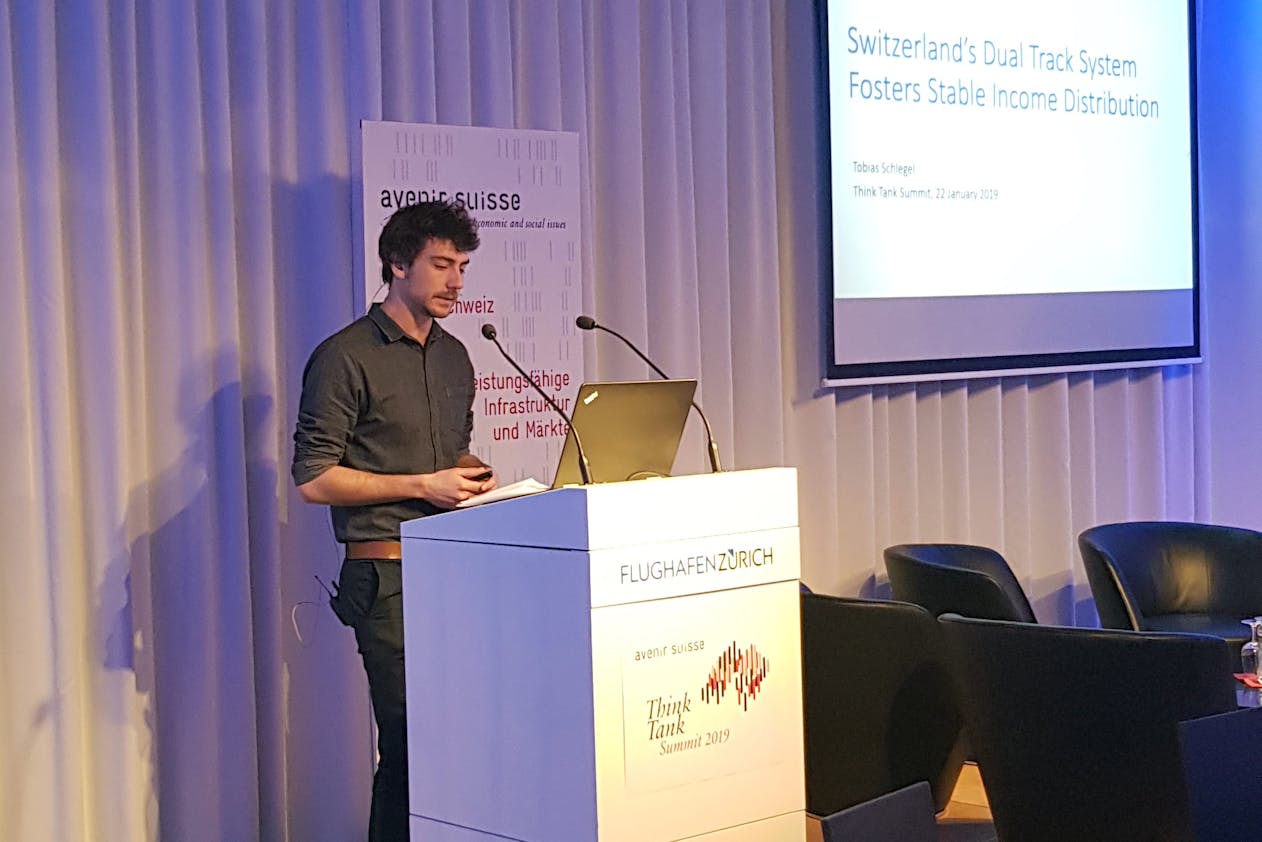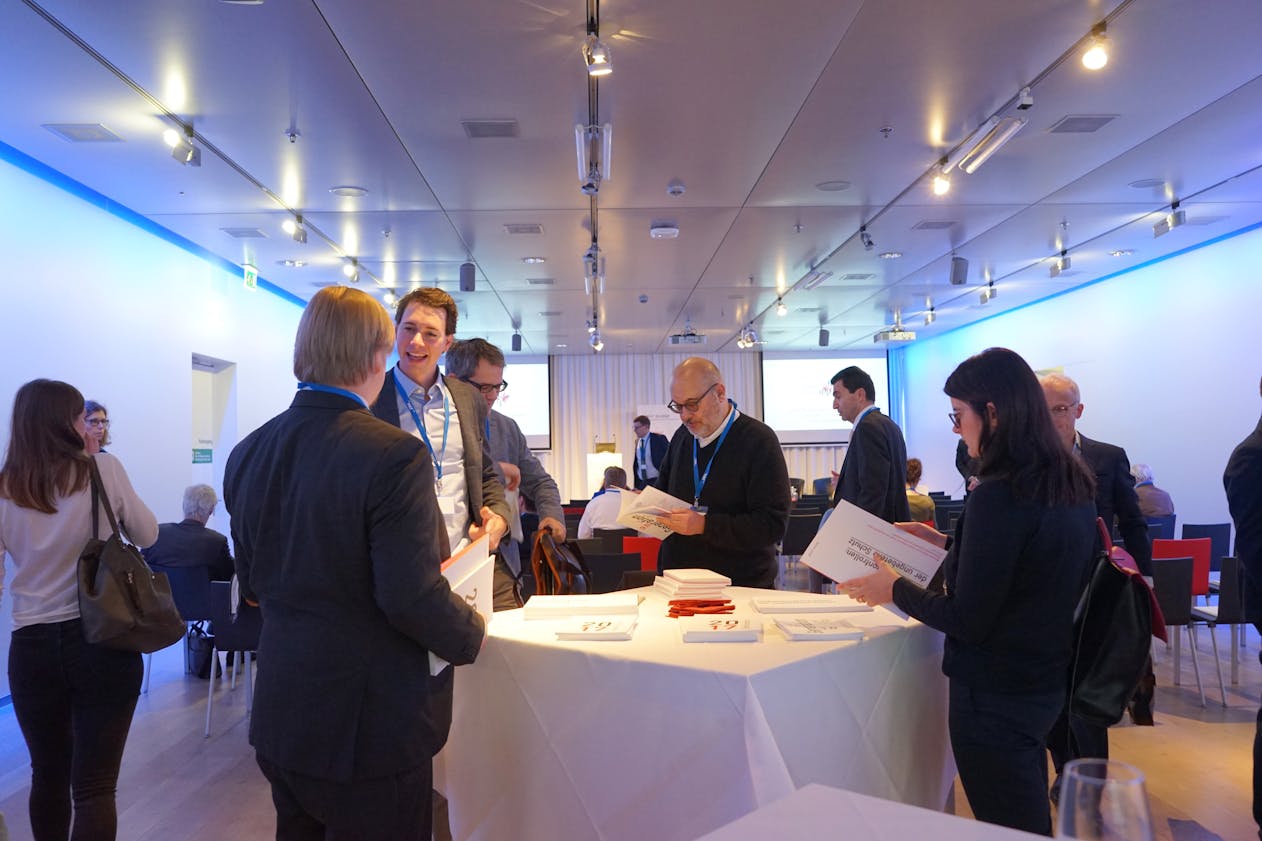Weltweit ist Ungleichheit zu einem brennenden politischen Thema geworden. Noch bis vor wenigen Jahren aber waren Fragen der Einkommens- und Vermögensverteilung für viele Ökonomen von nachrangiger Bedeutung, und sie wurden von vielen in der Zunft beiseitegeschoben.
Der diesjährige Avenir Suisse Think-Tank-Summit hatte die verschiedenen Aspekte von (Un-) Gleichheit beleuchtet – aus verschiedenen Gründen, wie Avenir-Suisse-Direktor Peter Grünenfelder in seiner Begrüssungsansprache betonte: Erstens wegen der grundlegenden Auswirkungen auf Wohlstand und Prosperität, zweitens wegen der Tatsache, dass Ungleichheit ein zunehmend toxisches Thema in der westlichen Welt ist, und drittens wegen der Notwendigkeit einer gründlichen Datenanalyse, auf deren Basis politische Schlussfolgerungen gezogen werden können.
Mehr als 30 führende internationale Experten wurden nach Zürich eingeladen, um ihre Forschungen zu Fragen der Einkommens- oder Vermögensverteilung zur Diskussion zu stellen. Ihre Präsentationen zeigten die unglaubliche Vielschichtigkeit des Themas. Während sich die Ungleichheit in den letzten Jahrzehnten auf globaler Ebene unbestreitbar verringert hat, ist die Entwicklung auf nationaler und regionaler Ebene sehr unterschiedlich. Entsprechend komplex gestaltet sich die Suche nach Lösungen für die Probleme.
Untenstehend finden Sie den ausführlichen Konferenzbericht auf Englisch:
The impact of globalization and digitization
For Branko Milanovic, professor at New York City University, in the long run inequality is determined by the spread of technological revolutions. As a result of the recent rise of Asia, global income distribution has converged considerably and a new global middle class has emerged. Milanovic expects this trend to continue. “Asian countries are going back to the position they held before the 15th century”. While Asia is key for now, Africa will be in the long run. Only if the continent with the fastest growing population catches up will global inequality shrink further and, ultimately, reduce migration.
The net growth of the global middle class has been good news for companies because it meant growing demand. Nevertheless, traditional middle classes in western countries have come under pressure through import competition from China and the like, complicating the political situation and giving populism a lift. Anastassios Frangolidis from Pictet highlighted the situation in the US, where the Gini coefficient has risen from 0.38 to 0.48 in 40 years, accompanied by a stunning fall in the population’s trust in the government. Mr Frangolidis added that the protracted period of cheap central bank money had encouraged the wealth gap to grow further.
Florian Scheurer from the University of Zurich unveiled some interesting details about the general impact of technology on inequality. Computers tend to replace jobs with a high degree of routine, which are typically in the middle of the wage distribution. Jobs in manufacturing or administration had seen hardly any rise in wages since the 1990s, unlike jobs with abstract (engineers, managers) or manual tasks (personal services, construction jobs). In a nutshell: digitization to a certain extent favors employment polarization.
The speakers delivered a wide variety of data about different countries. Inequality is still much less of a problem in Europa than in the US. So what are the conclusions for policy makers, if they want to take care of the middle class? The answer is: there will never be a solution that fits all.
Statistical hurdles everywhere
Good decisions require sound data, and this is where most of the problems start. Daniele Checchi from the Cross National Data Center in Luxemburg described the hurdles that statisticians are facing when trying to build a sound database: developed countries with developed tax systems typically collect data on income. That is not the case in developing countries, which typically collect only consumption data. This means serious international comparisons require a lot of know-how about the genesis of the data.
And in developed countries, privacy laws often hinder researchers to dive beyond aggregate levels. But to paint a more detailed picture, access to microdata would be of huge importance.
Even Swiss statistics are far from ideal. Martina Guggisberg and Irene Carbone of the Federal Statistical Office said Swiss cantons had diverging systems, and not all were equally open to sharing their data, so everything needed to be harmonized before comparison. Another problem is that household wealth data in Switzerland is quite scarce and tax data only available on a very aggregate level. But if you really want to measure inequality, wealth should be taken into account, especially in developed countries.
If income alone is measured, the elderly would look poor in Switzerland from a statistical point of view. But once you take wealth into account, the numbers change dramatically, as Ursina Kuhn from the University of Lausanne noted. According to her analyses, Switzerland has the highest per capita wealth in the world. But because half of the assets are held in the pension systems, the country’s official Gini distribution does not paint an accurate picture.
The role of Oxfam and the media
A good example for the public perception of inequality is the annual Oxfam study, which year after year reports growing global inequality. The general news about the European debt crisis, the Brexit vote, the Syrian war, and super-rich unicorn-entrepreneurs certainly contributed to the perception that the world has become worse. Hanno Lorenz from Agenda Austria questioned Oxfam’s approach, as it focused solely on the concentration of wealth. Although the figures per se might be right, they exclude an essential part of history: namely the fact that the world has become “more equal” over time as many former developing countries’ incomes have risen considerably, extreme poverty has decreased by 67% and infant mortality by 49% within the last 15 years.
Judith Niehues, economist at IW Köln, added an interesting finding: when people are asked to position themselves relative to society and their peers, they very often get it wrong. Some 52% of Germans, for example, rated inequality much higher than it actually was, and Hungarians are much more pessimistic than Finns, whereas reality is exactly the opposite. Interestingly, inhabitants of rich countries share more concerns about growing inequality than people in poorer countries. Basically, it can be observed that people are making great efforts to locate themselves correctly in society: rich people think they are poorer than they really are, while poor people think they are wealthier than they are. Ms Niehues also asked if the media might share responsibility here, because reports usually jump on extreme examples.
Equality of what?
Two Finnish economists showed that equality should not become a religion either: Ilkka Haavisto from Eva talked about the development of the Finnish middle class since the 1990s. In stark contrast to other countries, Finland has a nearly homogenous income distribution. The highest income group (above 4066 €/month) accounts for 5.8% of the population, while the low income earners (below 1524 €/month) account for 26%. By Mr Haavisto’s definition, more than 60% of Finns belong to the middle class. In the two recessions since 2008, equality grew further, while it used to shrink in more prosperous years. This is because a considerable share of the workforce has shifted from the private sector (ed. with higher productivity) to the public sector. Conclusion: while the economic backdrop has lowered income inequality, it was still not good news for the country.
Matti Apunen, director of EVA, showed how the Finnish propensity to egalitarianism has had negative effects on development. With a tax rate of 50-60%, the country stagnates and falls back year after year when compared to neighboring Sweden. Brain drain is accelerating too. Competition is a dirty word in Finland. And despite pronounced equality, individuals’ dissatisfaction in Finland has attained worrisome levels.
In his research, the Dane Martin Agerup has concluded that inequality is overrated because it changes for most individuals over their lives. In concrete terms, he found that 55% of all low-income earners rise within a year – and 89% over five years.
Swedish economist Nils Karlsson acknowledged that a fair society needs some kind of redistribution. The real challenge is the question where to draw the line. “Equality of what exactly?”, he asked. Referring to Hayek and his point that egalitarian equality is never within reach in a market economy, Karlsson took a swipe at the Gini coefficient, which he deemed “a bad measure”. Instead, society should focus on equal rights, which would correspond to peoples’ priority on equal opportunities over material equality. “Freedom and the rule of law are collective goods. You have to fight for them all the time.”
What can be done? What should be avoided?
Most researchers and guests shared concerns about shrinking income mobility in many societies. They acknowledged that equality of opportunity may never be independent from class origin. But it should be possible to climb the ladder through achievement. Higher income mobility means problems can be solved in a shorter period. However, differences are huge around the globe: As Markus Jäntti from the University of Stockholm stated, it takes two generations in Denmark to go from the lowest income to the mean income, but it requires ten generations in Colombia.
These are some of the most popular proposals brought forward for reforms at the national level:
1. Foster education – the sooner the better:
If people are well educated, they are more likely adapt to a changing labor market. The best way to ensure social mobility is through education. An often heard opinion was that early interventions (until the age of six) seem to work best. A UK study showed daycare for poor children in the early years has a high return. As a study from Finland demonstrated, intergenerational mobility was also increased as a result of comprehensive schooling between 11 and 16. The problem is that policymakers have to have a long timeline, because in this field things move at a glacial pace and reforms can take years before they start to bite.
Even so, long education is not always the solution. Tobias Schlegel (University of Zurich) pointed out that job polarization was less severe in countries with a VET system. Also Switzerland has had huge success with its vocational education system, because it introduces young people to the labor market in their teenage years and still leaves a door open to higher education thereafter. Two Danish entrepreneurs, Lars Tvede and Ulf Berg fiercely advocated the Swiss VET system:, noting that the share of young people with no education apart from obligatory school was 6% in Switzerland compared with 20% in Denmark.
2. Empower mothers
Addressing gender differences can have a large impact, too: As Susan Harkness from the University of Bristol outlined, politicians looking to reduce income equality should focus on employment – preferably that of lower class women. These women are much more often single mothers than their better educated peers. On the average, children from lone parents perform less well than those from families with two parents. Ms Harkness deems the widespread discussion on gender pay gaps misleading and recommends getting mothers back into the labor market as soon as possible after childbirth. Part time work can greatly hinder career development. “Motherhood is a major cause of gender inequality”.
Again, room for optimism is limited here too: Isabel Martinez of the University of St. Gallen estimated that Swiss women will have closed their gender pay gap somewhere between the next 46 to 200 years.
3. Keep the labor market flexible and taxes reasonable
Protectionism will not save the victims of globalization. Instead they will need more flexibility. Avenir Suisse’s Tibère Adler stated that the digital economy demanded new forms of social security to encourage, rather than hinder people taking part. Additionally, extensive labor protection rights in the form of dismissal red tape tends to keep people in jobs they should better leave.
Miguel Otero from the Elcano Royal Institute pointed out: “In destructive times it pays off to be an entrepreneur.” Instead, many European countries have seen a declining share of entrepreneurs and expanding public sectors.
People will be ready to take risks if taxes are kept at reasonable level. As Ulf Berg put it from the entrepreneur’s perspective: “High taxes put up trade barriers between people. From a certain level onwards, it will be smarter not to work together.” In the long run, low taxes reap a lot of benefits, while a high public sector will keep productivity down.
Stefan Neumann (Stiftung Neue Verantwortung) had another proposal: The job market of the future increasingly asks for skills, instead of degrees. New job portals that highlight individuals’ skills might raise the chances of jobseekers.
4. Establish sound institutions
Lukas Schmid and Christian Frey from the University of Lucerne showed the influence of Swiss institutions on inequality: in contrast to all other European countries, inequality has changed least in Switzerland since 1945. That was true even compared to France – a country where inequality has risen sharply despite high redistribution.
Schmid and Frey attributed this to the federal structure of the Swiss state and the high quality education system. In the race between technology and education, education has always won in Switzerland – with the result that technological developments have never led to individual sections of the population being excluded or left behind.
Separately, Avenir Suisse’s Senior Researcher Jennifer Langenegger pointed out that central banks should not be drawn into the discussion about inequality, but rather keep an eye on their independence. The core objective of central banks is to achieve economic stability. It is up to social and fiscal policies to achieve the level of equality which is politically desired.
Natanael Rother, who was responsible for this year’s Summit, drew a positive conclusion. The greatest of all challenges in the field of inequality is to make sure the political debate is based on facts and not distorted by ideology. The Summit was highly successful in bringing different views together and in encouraging people to discuss matters in depth. There are no simple solutions and one has to carefully distinguish between different countries and different goals of policy proposals.


